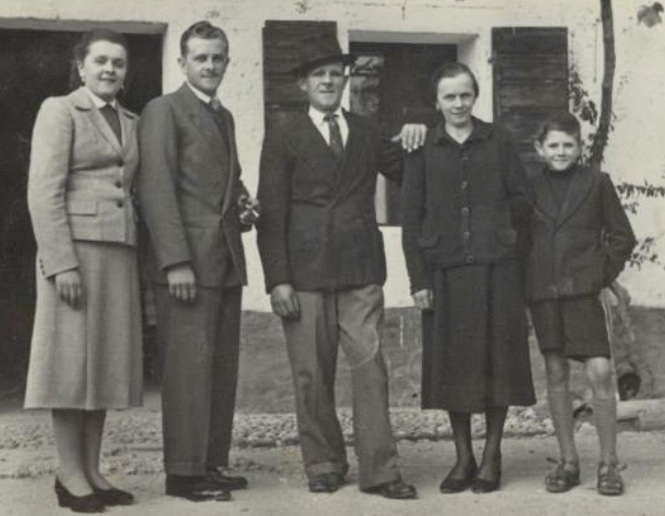Guest blogger, Anna Baronian nee Carniello writes about her father’s experience at the Bonegilla Migrant Reception and Training Centre and her visit there in 2019. Anna also reflects on her connections to family in Caselle di Altivole.
My father Giovanni Carniello was born in Caselle di Altivole, province of Treviso in 1929 and he passed away in 1999. After completing his military service, at the age of 23 he travelled to Australia on the ship “San Giorgio” together with his cousins, Primo and Secondo Carniello.

Giovanni’s sister Bertilla arrived the following year and she later married Egidio Antonini. In 1961 Dad’s brother Tarcisio arrived and he lived with my parents at 63 Garden Terrace, Lockleys. Dad worked as a labourer in the concrete business owned by Primo and Secondo Ballestrin.
After being at sea for 40 days, dad and his cousins arrived in Melbourne on November 21st 1952. Dad was not part of an assisted scheme, so upon arrival, he was handed a name tag attached to a string which was hung around his neck. From there he boarded a train followed by a bus, to travel to Bonegilla, a migrant camp established on the site of a former army camp and located on the banks of the Murray River near Albury-Wodonga. Bonegilla was an isolated place on the southern shore of Lake Hume 300 kilometres from Melbourne.
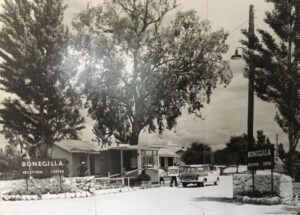
It remained for thousands of Italians, the place of their first encounter with what would be their new home, Australia – and perhaps even some of our market gardeners from the Veneto region began their new lives there.
Bonegilla’s major functions were to process and house migrants, find work for new arrivals and most importantly, provide language and civics training. The work included fruit picking, working in the cane fields or as labourers on the Snowy Mountains Hydroelectric Scheme. There were 832 huts or army barracks spread out over 24 blocks on a 240-hectare site. The migrants were separated by nationality with separate accommodation for men and women and children. Each hut could accommodate 20 people and initially there were no internal partitions. Later the huts were divided into cubicles approximately 4x3m and they were lined to protect the residents from the heat and cold.
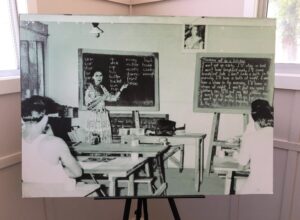
Everything would have been very unfamiliar to our paesani, the dry and vast space, eucalyptus trees, the unfamiliar food and language, the health checks, the basic living conditions and their introduction to English and civics training.
The migrants were given blankets, bed-sheets, towel, crockery and cutlery. Everybody had to help keep the camp tidy, so shovels, brooms, rakes and pails were also distributed. If they got lost or damaged, they had to be replaced by the person and their value was deducted from the one pound per week that the government gave to migrants.
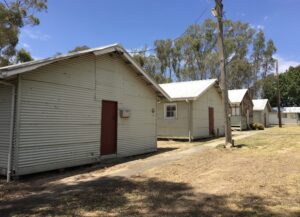
I visited the Bonegilla Migrant Camp in January 2019 where I encountered the Bonegilla Migrant Experience. Block 19 which consisted of 24 huts and could accommodate up to 350 people has been retained as a museum and interpretive centre. On the site, they have recreated the sights and sounds of what life was like for the new arrivals. I experienced the audio-visual installations that have been created to capture what life was like for the new-comers; on their arrival, in the dormitories, in the dining room and recreational areas. I have included some photos from my visit. I found it quite emotional thinking about what it would have been like for dad, leaving his homeland, family and friends.
Bonegilla was the longest operating migrant centre in Australia, from 1947- 1971, by which time over 300,000 people had passed through. It is estimated that today there are over 1.5 million descendants of Bonegilla migrants.
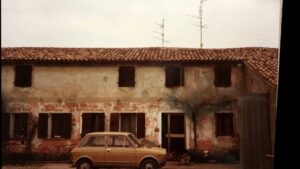
I have visited Caselle d’Altivole on several occasions, the first time being when I was 9 years old and we lived next door to my nonni for about 10 months. I have fond memories of riding with my nonno on the cart pulled by their donkey to buy farm supplies.
Anna Baronian nee Carniello
26 July 2020
Mio padre, Giovanni Carniello, e nato in Caselle di Altivole nel 1929 ed è morto nel 1999. Dopo che ha finito il servizio militare all’età di 23 anni, è venuto in Australia con la nave, “San Giorgio” con i suoi cugini, Primo e Secondo Carniello.

La sorella di Giovanni, Bertilla è arrivata l’anno dopo e si è sposata con Egidio Antonini. Il fratello di mio padre, Tarcisio, è arrivato nel 1961 e visse con i miei genitori a 63 Garden Terrace, Lockleys. Mio padre ha lavorato come operaio nel cemento che apparteneva ai fratelli Ballestrin.
Il viaggio è durato 40 giorni e mio padre e suoi cugini sono arrivati a Melbourne il 21 novembre 1952. Mio padre non è venuto assistito dal governo. Quando è arrivato a Melbourne le hanno dato un pezzo di carta col suo nome da mettersi attorno al collo. Da Melbourne ha preso il treno e dopo l’autobus per arrivare a Bonegilla. Era un campo per immigranti costruito dove prima era un campo militare vicino al fiume Murray vicino Albury-Wodonga. Bonegilla era un posto isolato circa 3000 chilometri da Melbourne. È rimasto il posto del primo incontro di migliaia di italiani ed altri immigranti, la loro prima casa in Australia. Forse anche certi ortolani della regione veneta che arrivarono là negli anni 50.

A Bonegilla c’erano 832 baracche militari in circa 24 blocchi in 240 ettari di terreno. Gli immigranti erano separati da nationalità e gli uomini da una parte e le donne con bambini all’altra. Ogni baracca poteva accomodare 20 persone e inizialmente senza partizioni per privacy. Dopo le baracche erano divise in piccole stanze approssimativamente 4 metri per 3 e per protezione dal freddo e dal caldo. Tutto era molto strano per i nostri paesani – lo spazio secco e molto vasto, le piante di eucalipto, il cibo, le visite mediche, le condizioni base e le lezioni di inglese. Gli immigranti hanno ricevuto coperte, lenzuole, utensili da cucina. Tutti quanti dovevano tenere il campo in ordine. Se gli utensili venivono danneggiati dovevano rimpiazzarli con in valore dedotto dalla loro paga che era una sterlina alla settimana che il governo passava agli immigranti.

La maggiore funzione in Bonegilla era quella di provvedere accomodazione, lavoro, e molto importante, provvedere l’insegnamento della lingua inglese e cultura Australiana. Lavoro includeva raccogliere frutta, lavorare nelle canne da zucchero o come operai nella idrolettrica che si chiama “Snowy Mountains Scheme.”
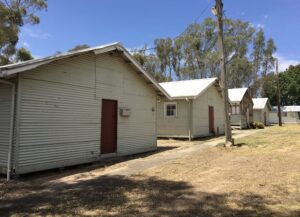
Ho visitato Bonegilla Migrant Camp nel gennaio 2019. Ho avuto l’esperienza degli immigranti che vivevano a Bonegilla. C’è un museo che consiste del Block 19 (24 baracche che poteva accomodare fino a 350 persone). Nel museo è possible fare l’esperienza della vita quotidiana degli immigranti. Ho visitato i dormitori, la sala da pranzo e la zona di ricreazione.
Bonegilla è stato il posto che ha ricevuto gli immigranti il tempo più lungo dal 1947-1971. Più di 300,000 persone sono passate per le sue porte. Oggi è estimato che ci sono più di 1.5 milione discendenti degli immigranti di Bonegilla.
Mi sono comossa moltissimo a provare queste sensazioni. Ho pensato come mio padre poteva sentirsi a lasciare la sua terra, la sua famiglia e suoi amici.

Sono andata a Caselle di Altivole parecchie volte. La prima volta era quando avevo 9 anni e siamo stati vicino ai nonni per circa 10 mesi. Un caro ricordo e quello di andare con mio nonno sul carretto tirato dall’asinello per comprare roba per la fattoria.
Anna Baronian nee Carniello
il 26 luglio 2020
